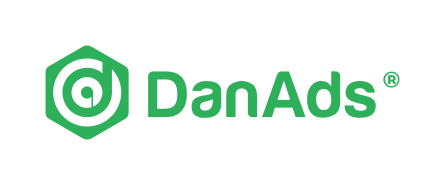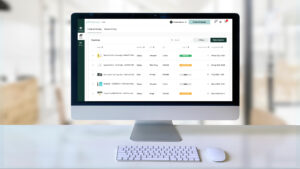Whether you’re a seasoned marketer looking to refine your strategy, a publisher aiming to maximize your digital real estate, or simply curious about the mechanics of online advertising, this article promises insights that will transform your understanding and approach.
Defining the ‘Publisher’ in ad tech
Imagine you’re the owner of a bustling digital plaza, where various storefronts (websites, blogs, and digital platforms) pull in crowds (audiences) eager to explore, learn, and perhaps make a purchase or two. In online advertising, you, as a publisher, are essentially this plaza owner. Your digital space is valuable real estate in a world where attention is the new currency.
Your role? To offer this digital ad space to those looking to showcase their products or services (a.k.a. advertisers). Think of your website or platform as a canvas, one that advertisers are keen to paint their messages on, hoping to catch the eye of your audience. You aim to balance providing valuable content to your audience while monetizing your site through advertisements.
You’re not just selling space; you’re providing advertisers access to your audience, a group that trusts you to present them with content and ads that are relevant, engaging, and, above all, valuable. As a publisher, your insight into your audience’s preferences and behaviors is your crown jewel, helping you attract advertisers that are a good match for your digital space.
The origin of the term “Publishers”
The term “publishers” has its roots deeply embedded in the content creation and distribution tradition, tracing back to the time of print media such as books, newspapers, and magazines. This was the world of traditional publishing, where the role was clear: select, refine, and distribute content that informed, entertained, or educated the masses. Fast forward to today, and the core of publishing hasn’t changed, but the platform certainly has. Now, as a publisher in the digital age, your reach extends beyond the physical to websites, blogs, and social media platforms, reaching audiences far and wide with the click of a button. The digital revolution has transformed how content is consumed and who gets to wear the publisher’s hat. Essentially, if you’re creating content and gathering an audience online, congratulations, you’re a publisher. The accessibility of content creation has led to a richer, more diverse online ecosystem where voices from all corners of the globe can be heard. As a publisher today, you’re not just dealing with content; you’re managing a piece of digital real estate that advertisers are keen to occupy. Your audience is your currency, and the trust and engagement you’ve built up make your space so valuable to advertisers.The difference between Affiliates, Marketers, and Publishers
The world of online advertising is like a marketplace where everyone has a role to play, from the strategists planning their next big campaign to the creators of the spaces where these campaigns live. In this ecosystem, three key players stand out: affiliates, marketers, and publishers. Each plays a unique part in digital advertising, moving to the rhythm of clicks, views, and conversions.- Affiliates: Imagine them as the savvy connectors in our marketplace, linking the buyer and seller without owning the goods themselves. They’re like the friend who knows exactly where to find the best deals and earns a little thank-you commission each time they make a successful introduction. In digital terms, affiliates promote products or services through their channels (which could be a blog, social media, or a website) and receive compensation based on the actions taken by their referrals, typically through sales or leads.
- Marketers: The masterminds behind the campaigns, the ones who craft the messages, choose the channels and decide how to reach potential customers best. Their world is one of strategy, creativity, and analysis, focusing on engaging with audiences in meaningful ways to drive awareness, consideration, and conversions. Marketers may work directly for brands or agencies, and their compensation is often tied to their performance or the budget they manage.
- Publishers: These are the creators or curators of the spaces where ads live. They own the digital real estate – be it a website, blog, or social media platform – and provide the audience advertisers want to reach. Unlike affiliates, who earn based on direct sales or actions, publishers typically monetize their space through various models, such as pay-per-click (PPC), where they earn every time an ad is clicked, or through more traditional models like fixed-rate sponsorships.
The role and definition of an advertiser in ad tech
As an Advertiser, your mission is to find prime digital real estate where your message can shine. Essentially, buying ad space where your target audience loves to spend their time. This role requires a deep dive into the digital landscape, identifying the right publishers and crafting resonating messages.
Advertisers are the lifeblood of the digital advertising ecosystem, constantly seeking out direct opportunities for publishers to showcase their products or services. You’re not just buying ad space; you’re engaging in a strategic partnership with publishers to place your ads in environments where they’ll have the most impact.
As an online advertiser, your goal is to craft campaigns that speak directly to potential customers, blending seamlessly into the content they’re already consuming. This requires a deep understanding of both the publisher’s audience and the best ways to engage them. Whether it’s leveraging ads publishers are known for or negotiating the perfect spot for your campaign, your role is key in bridging the gap between product offerings and consumer interests.
The advertiser definition extends beyond simply being a buyer of ad space; it also means being someone who sees the potential in every click and view. You’re tasked with turning these opportunities into tangible results, whether through lead generation, sales, or brand awareness campaigns. This is where the dance between advertiser and publisher becomes critical – finding the right synergy that allows your ads to thrive while enhancing the user’s experience on the publisher’s platform.
Direct advertising vs direct deals
Navigating online advertising, you face a choice: diving into direct advertising or forging direct deals. With direct advertising, you can select exactly where your ads land, ensuring they’re placed on websites where they’ll resonate most with your audience. It’s about making strategic decisions, choosing the right publishers who align with your brand’s values and target demographics, and optimizing your campaigns for maximum impact.
Direct deals, however, offer you a unique opportunity to negotiate directly with publishers for premium ad spaces, crafting a partnership that benefits both. These deals allow you to tailor your advertising efforts more precisely, reaching your audience more meaningfully. It’s a deeper dive into creating campaigns that capture attention and convert, leveraging the strengths of a publisher’s platform to amplify your message.
As you weigh your options between direct advertising and direct deals, consider how each approach aligns with your advertising goals. Are you looking for broad reach and control over your ad placements, or are you aiming for targeted impact through exclusive partnerships? Your decision will shape how effectively you connect with your audience, highlighting the critical balance between advertiser aspirations and publisher offerings in the digital advertising ecosystem.
Comparing publisher ad servers and advertiser ad servers
You’re bound to encounter two essential tools: publisher ad servers and advertiser ad servers. Each serves a unique purpose, tailored to fit the needs of either publishers or advertisers, shaping how ads are managed and displayed online.
- Publisher ad servers: If you’re a publisher, your ad server acts as the control center for managing ads on your site. It’s about prioritizing and optimizing ad spaces to maximise revenue and ensure that ads align with your content and audience interests. This direct management capability is crucial for maintaining a seamless user experience and leveraging your digital space effectively.
- Advertiser ad server: As an advertiser, your ad server focuses on distributing and tracking your ads across the web. It’s all about delivering your message precisely, ensuring the right people see your ads at the right time. With detailed analytics on ad performance, you’re equipped to refine your strategies, aiming for higher engagement and conversion rates.
The key difference lies in their roles and objectives: publisher ad servers are all about optimizing digital real estate for the best possible user experience and revenue outcomes. In contrast, advertiser ad servers maximise campaign performance and audience engagement across various platforms.
Summary of key distinctions between publishers and advertisers
Understanding the distinction between publisher and advertiser roles is not just about defining who does what; it’s about recognizing the potential for strategic collaboration. When publishers and advertisers align their efforts, a more cohesive and effective advertising strategy benefits both parties – and, most importantly, the audience.
Publishers, who manage the platforms where ads are displayed, focus on optimizing their digital spaces to ensure content resonates with their audience while generating revenue. The essence of being a publisher revolves around understanding the audience deeply and leveraging that insight to provide value, both to the user and the advertisers who wish to engage with that audience.
Advertisers, on the other hand, aim to craft messages that reach, engage, and convert audiences across various digital platforms. The advertiser’s journey involves selecting the right platforms (or publishers) to ensure their target demographic sees their ads, emphasizing the importance of strategic placement and messaging to achieve their marketing goals.
Danads, a leader in self-serve advertising solutions, underscores the importance of this synergy, noting, “The key to successful digital advertising is finding the right audience, in the right place, at the right time. By giving advertisers access to high-quality audiences through premium publisher brands, and providing a suite of easy-to-use tools to tweak and optimize their campaigns, we empower them to get the best possible results with their ad spend.
As you’ve gone through the intricacies of defining publishers and advertisers, one thing is crystal clear: the right tools can transform challenges into opportunities. This is where self-serve platforms step into the spotlight. And they’re not just tools; they’re game-changers for publishers and advertisers alike, streamlining processes, enhancing efficiency, and unlocking new levels of strategic engagement. Curious to see how? Read more about self-serve platforms on our website and revolutionize your approach to digital advertising.






